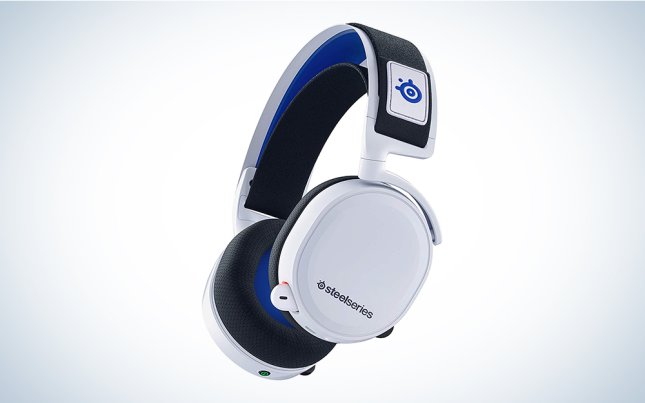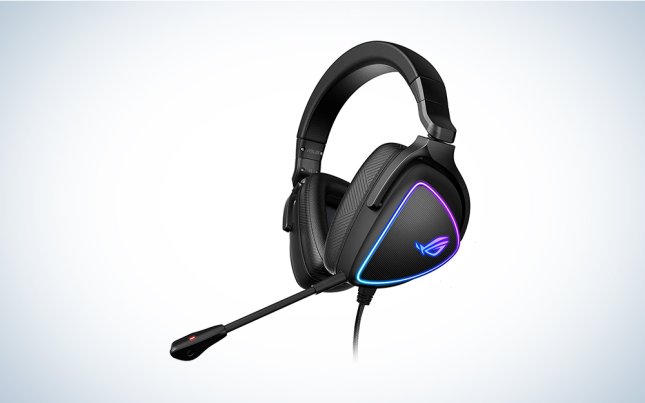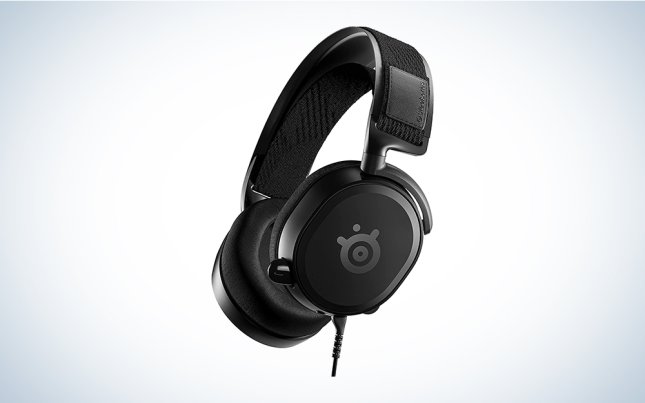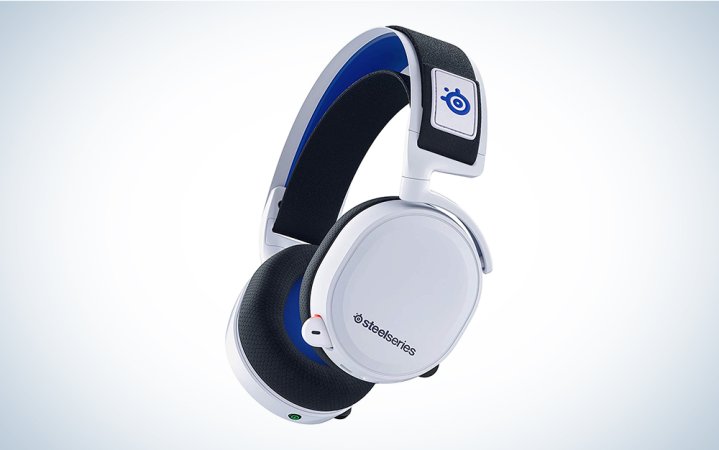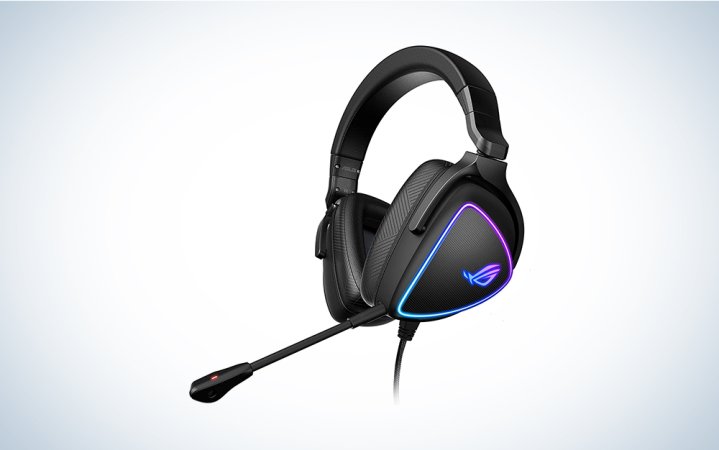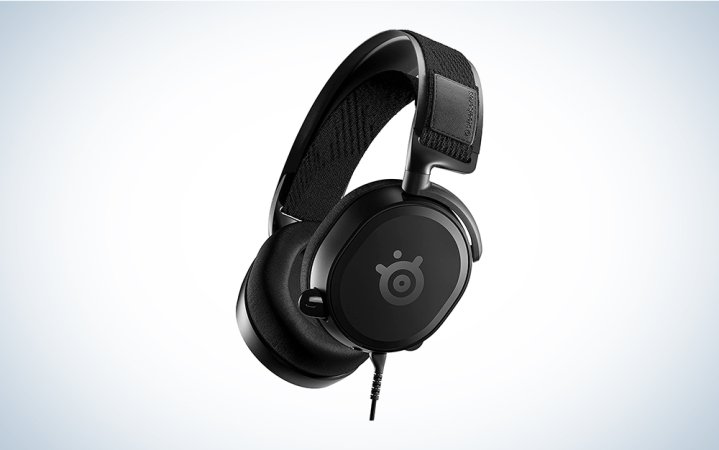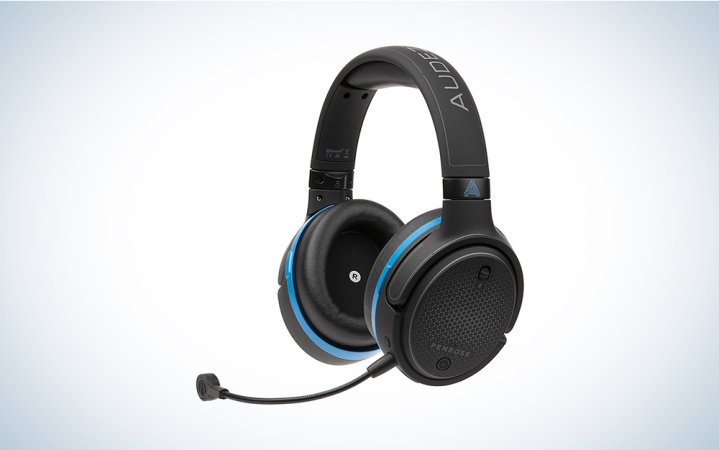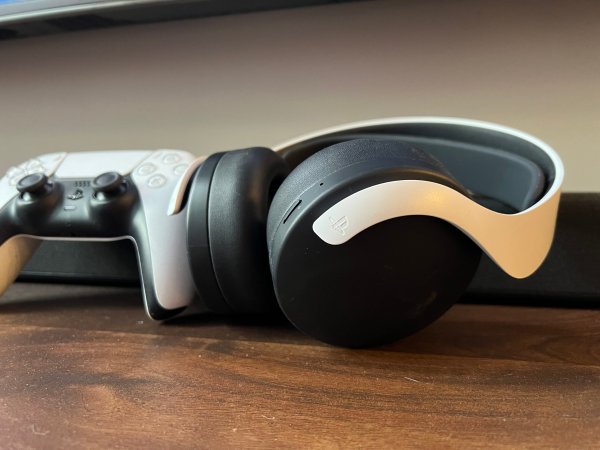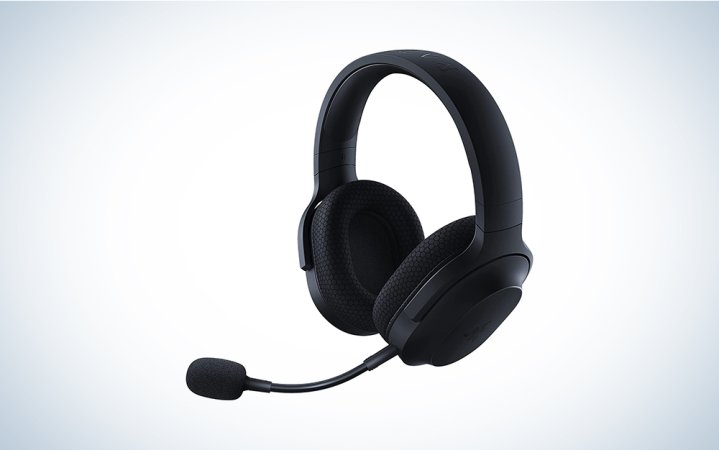We may earn revenue from the products available on this page and participate in affiliate programs. Learn more ›
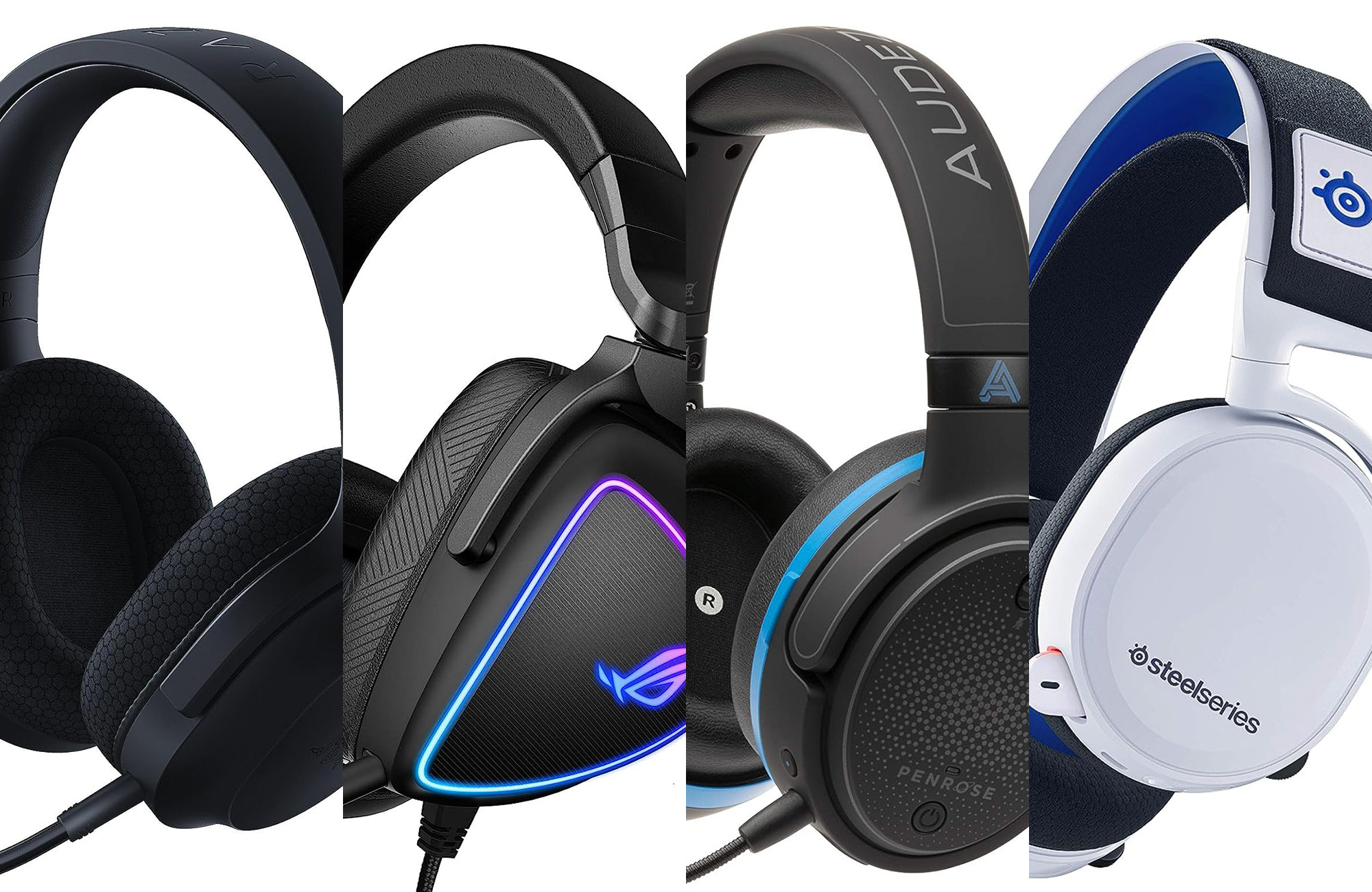
Killer audio is the unsung hero of the PlayStation 5, and a PS5 headset only enhances the experience. Sony’s latest console features a host of incredible upgrades—sharper visuals, improved framerates, an SSD that dramatically cuts down on load times, and a new DualSense controller with enhanced haptic feedback. One of my favorites, though, is the console’s Tempest audio technology, which imbues your headset with 3D spatial audio—virtual surround sound that can simulate sounds coming from above or below or all around you. Tempest started compatible only with headphones and headsets but now works to expand the soundstage of the stereo speakers in a flatscreen TV. However, you’ll want to play with headphones or a gaming headset to get the most out of your games, even single-player experiences. The fact is a headset is now only the best way to dig into the depths of a game’s soundtrack and directional cues, but it’s also the easiest way to chat with friends and other players, so finding the best PS5 headset for you is crucial to getting the most out of the experience.
- Best overall: SteelSeries Arctis 7P
- Best wired: Asus ROG Delta S
- Best for esports: SteelSeries Arctis Prime
- Best for audiophiles: Audeze Penrose
- Best for single-player experiences: Sony PlayStation Pulse 3D
- Best budget: Razer Barracuda X
How we chose the best PS5 headsets
As a longtime tech and gaming critic, I have a lot of experience using gaming headsets. I’ve reviewed dozens of them for sites like IGN, PC Gamer, and, of course, Popular Science. The majority of my recommendations are based on my own personal testing, playing all kinds of games on PlayStation 5 with the included DualSense controller. In a couple of cases, I deferred to the accounts of my colleagues past and present, while ensuring that the headsets offered high-quality specs and value.
The best PS5 headsets: Reviews & Recommendations
There is no single best PS5 headset for everyone, but I’ve winnowed down my experiences to a shortlist of candidates for most players, depending on a few key factors. All of them are very good, though, so you can’t go wrong with any of these picks.
Best overall: SteelSeries Arctis 7P
Everything a PS5 player needs
Why it made the cut: It is a great overall headset made specifically for PlayStation.
Specs
- Drivers: 40mm
- Frequency response: 20-20,000 Hz
- Microphone: Retractable wire boom, bi-directional
- Connection types: 2.4 GHz wireless via USB-C dongle, Analog (3.5mm)
- Estimated battery life: 24 hours
Pros
- Balanced sound
- Comfortable
- Great battery life
Cons
- Bluetooth is on a more expensive model
- microUSB charging port
SteelSeries Arctis’ line of headsets is incredibly well-rounded. They’re comfortable and deliver sharp sound and a solid connection. The PlayStation-specific Arctis 7P delivers the best bang for your buck if you’re looking specifically for a PS5 headset. (Technically, it also works on Nintendo Switch and Android phones with USB-C, too). If you also want to play on PC or Bluetooth support to pair with a phone, the more expensive Arctis 9 is also an excellent choice.
Best wired: Asus ROG Delta S
All the features
Why it made the cut: The Asus ROG Delta S sounds incredible and comes with loads of stellar features, including MQA audio codec support, customizable RGB lighting, and more.
Specs
- Drivers: 50mm
- Frequency response: 20-40,000 Hz
- Microphone: Detachable, Unidirectional with Noise-Cancellation
- Connection types: USB-C, USB-A (with extension cable adapter)
- Estimated battery life: N/A
Pros
- Some of the most nuanced-sounding headsets I’ve tested
- USB-C or USB-A with an adapter that doubles as an extension cable
- Distinctive style, including RGB earcups
Cons
- Some features are primarily for PC, like MQA streaming audio support
- Expensive, especially for a wired headset
The Asus ROG Delta S is, if nothing, distinctive. A concentrated burst of flashy features, like an internal quad-DAC, triangular ear cups, RGB lighting, and support for Master Quality Authenticated (MQA), the high-fidelity legacy encoding format of streaming services like Tidal’s “master” quality audio. Normally, overloading a headset with showy bells and whistles is a red flag—a sign that maybe the headset underneath all the features isn’t so great. In this case, however, those features are all icing on the cake, so to speak. The Delta S delivers sharp audio across its range and a rare level of clarity among gaming headsets. It is a USB-wired headset, so you will need to have a cable running from the front of your PS5 to your head, but with a 5-foot cable and a 3.2-foot extension cable, it isn’t as restrictive as other wired models. Plus, you know … it sounds really good.
Best for esports: SteelSeries Arctis Prime
Playing to win
Why it made the cut: Everything about the Arctis Prime is simple and clean. Simply put, it is the best analog-only headset I’ve ever used.
Specs
- Drivers: 40mm
- Frequency response: 10-40,000 Hz
- Microphone: Retractable, Bi-directional with noise-cancellation
- Connection types: Analog (3.5mm)
- Estimated battery life: N/A
Pros
- Suspended headband is very comfortable
- 3.5mm connection means it works with every platform
- “High fidelity” drivers sound better than most 3.5mm headsets
Cons
- Limited customization
- A bit expensive for limited feature-set
I’m continually surprised to find myself returning to the Arctis Prime over and over. As an esports headset, its simple design focuses on the basic functions of a headset: It needs to sound clear, and it needs to make you sound clear. It excels on both counts, thanks to “high-fidelity” drivers previously reserved for SteelSeries’ most expensive headset, the Arctis Pro, and a noise-canceling microphone.
Best for audiophiles: Audeze Penrose
Luxury listening
Why it made the cut: A luxurious-sounding headset from an audiophile headphone brand? What’s not to love?
Specs
- Drivers: 100mm
- Frequency response: 10-50,000 Hz
- Microphone: Detachable, Wire boom
- Connection types: 2.4 GHz wireless, Bluetooth, Analog (3.5mm)
- Estimated battery life: 15 hours
Pros
- Planar magnetic drivers
- 2.4 GHz and Bluetooth wireless
Cons
- Very expensive
- OK battery life
Audeze, a brand best known for its impressive audiophile-grade headphones, also makes some of the best gaming headsets on the market. Though it isn’t quite as feature-rich as the Audeze Mobius headset for PC, the PlayStation-specific Penrose and Xbox-specific Penrose X bring the company’s superior sound to consoles (as does the newer Audeze Maxwell). The secret, so far as we can tell, is the headset’s planar-magnetic drivers, which can achieve a bassy, but nuanced sound that pairs especially well with games. At $300, the Penrose is very pricey for a gaming headset. Then again, Audeze’s professional flagship headphones run from the MM-500, which costs $1,699, to the Audeze CRBN, costing $4,500 … and other audiophile-grade gaming headphones, like the Master & Dynamic MG20, cost $449 … so everything is relative.
Best for single-player experiences: Sony PlayStation Pulse 3D
The classic
Why it made the cut: Sony’s own headset is designed to take special advantage of the PS5’s spatial audio technology.
Specs
- Drivers: 40mm
- Frequency response: N/A
- Microphone: Dual internal microphones with noise-cancelling
- Connection types: 2.4 GHz wireless, analog (3.5mm)
- Estimated battery life: 12 hours
Pros
- Large ear cups pair great with spatial audio
- High quality for the price
- Light and comfortable
Cons
- Doesn’t work as well with other platforms
- So-so battery life
The Sony Pulse 3D, PlayStation’s own PS5 wireless headset, is a unique and, in some ways, perplexing device. Its cavernous ear cups create a great soundstage that gets the most out of the console’s spatial audio tech, Tempest, and makes games sound great, particularly when you compare it to other headsets at the same $99 price point. That said, it uses internal microphones, similar to what you’d find on a pair of wireless, productivity-focused noise-canceling headphones, rather than a boom mic. Even with noise-reduction tech, you can expect them to let in more ambient noise than other microphones. Hence, the caveat. The Pulse 3D is an excellent budget-conscious headset pick if you’re looking to get the full audio experience out of the PS5, but don’t care so much about chat quality. And if you do care? Check out the flagship Sony INZONE H9 wireless gaming headset, which adds active noise cancellation (like the consumer WH-1000XM4) and a flip-to-talk boom mic. Combined, the tech in the Inzone lets you zone in to the game.
Best budget: Razer Barracuda X
Play where you want
Why it made the cut: The Barracuda X offers solid sound and a versatile wireless connection thanks to its USB-C dongle.
Specs
- Drivers: 40mm
- Frequency response: 20-20,000 Hz
- Microphone: Detachable, Unidirectional
- Connection types: 2.4 GHz wireless via USB-C dongle, Analog (3.5mm)
- Estimated battery life: 20 hours
Pros
- USB-C dongle works with almost every core gaming device
- Affordable
- Good battery life
Cons
- Sound is good, but not quite as impressive as other picks
The Barracuda X is the move for players who care about convenience above all else. With a USB-C wireless dongle, it easily pairs wirelessly with the PS5, Switch, PCs, and most modern Android phones. Its balanced sound profile doesn’t punch your eardrum with bass like lesser headsets, which narrowly puts it over much of the mid-to-budget wireless pack. That said, it doesn’t achieve the same level of nuance or audio isolation as the other headsets on this list. Even so, the Barracuda X is the closest thing to a one-size-fits-all wireless headset that I’ve tried, and that’s valuable for a lot of players.
What to consider when buying the best PS5 gaming headsets
Buying a headset using the information on the back of the box can be a crapshoot. There’s some useful information on there, but the most important qualities, like sound quality and comfort, cannot be gleaned from specs. Still, there’s a lot of useful information that can help you make a good purchasing decision in the moment.
Compatibility
The most important question is also the easiest to solve … Most of the time. Always check to make sure if a headset works with the platform(s) you own. For consoles like the PS5 and Xbox Series X, the console is frequently referenced in the name of the product, or there’s a large sign on the box with a console logo. Worst case, you need to check a list on the box of compatible devices. Many wireless headsets for PC are also compatible with the PS5, so it never hurts to check their compatibility when you’re shopping.
Wired vs. wireless headsets
As with the PlayStation 4, the PS5 supports both wired and wireless headsets. Choosing between a wired and wireless headset is often a question of convenience versus cost. While the gap between the two isn’t gigantic, adding the extra tech to make a headset work untethered noticeably increases its price.
That said, there are also good, non-financial reasons to consider a wired headset: Even the best wireless gaming headsets need to be charged frequently. Most premium headsets have an estimated max battery life of around 20 hours. (Often, you’ll get significantly less). If you play often enough, you may find yourself plugging the headset in to charge while you play. Some players will tell you that it’s worth it to use a wired headset to mitigate audio lag, but in my experience, that’s not an issue with a dedicated headset, especially if it connects to the console via a 2.4 GHz wireless dongle instead of the slightly slower Bluetooth option.
Weight
The weight of your headset matters more than you think. During a long play session, a heavy headset can start to feel heavy on your head. It doesn’t necessarily reveal whether or not a headset will be comfortable over time on its own: Padding, particularly a suspended or self-adjusting headband, can go a long way to easing the burden of a heavy headset. Ultimately, figuring out what’s comfortable is a personal decision, but if a headset looks big and bulky, chances are it’s going to be heavy. If that’s the case, look for thick memory foam padding and/or a suspended headband.
Microphones
Technically, a gaming headset is a combination of two devices—headphones and a microphone. The microphone is half of the equation, but most reviews spend significantly less time on it than the headphones. The fact is that most headsets reach a pretty high bar for quality across the board, and rarely deviate too far from it, so you don’t need to worry about specs too much. There are design qualities to keep in mind, like whether a mic is detachable or retractable. Some high-end headsets feature active noise-cancellation in the microphone to minimize ambient noise, which is always a nice touch but not necessarily a dealbreaker.
FAQs
The PlayStation 5 works with wireless headsets that support its specific wireless standard, and wired headsets that connect via USB-A, USB-C, or an analog 3.5mm headphone jack. (Technically, you can also connect Bluetooth headphones to a PS5 with a USB Bluetooth adapter, but I wouldn’t recommend it). The easiest way to determine whether a headset is PS5 compatible or not is to simply check the box. There is almost always some mention of what platforms it’s designed for.
In most cases, you should be able to connect a PlayStation 4 headset to the PS5, especially if it pairs using a USB dongle or 3.5mm analog port. In fact, you’ll find that many new headsets brand themselves as PlayStation-compatible, rather than PS5-compatible, because they work with both PS4 and PS5.
Most worthwhile gaming headsets cost between $99 and $200, though there are exceptions, including some of the high-end headsets on this list.
Final thoughts on the best PS5 headsets
- Best overall: SteelSeries Arctis 7P
- Best wired: Asus ROG Delta S
- Best for esports: SteelSeries Arctis Prime
- Best for audiophiles: Audeze Penrose
- Best for single-player experiences: Sony PlayStation Pulse 3D
- Best budget: Razer Barracuda X
Everyone has their own priorities when buying a gaming headset. Some people want the best sound. Others prioritize comfort, or price, or convenience. Though there’s a lot of variation as you explore the range from budget models to audiophile-grade gear, remember that there are great options at every price and that the idea of the “best PS5 headset” is different for every person.
